Largemouth bass are revered by millions of anglers. Catfish now have magazines and brands of fishing tackle devoted specifically to them. There is even a Gar Anglers’ Sporting Society for anglers who pursue those highly underrated fish (no kidding, you can Google it). But in the spring of the year when the waters are warming up and the dogwoods start to bloom, I’d venture to guess that no fish has more fans out there than the crappie.
There are a number of reasons why crappie are so popular in Missouri. They are found in streams, lakes, and ponds statewide, so you don’t have to drive half a day to get to a fishable population. They are fairly easy to catch, and you do not need a huge tackle box full of lures, or even a boat, to do so. When the bite is on, the action can be extremely fast. It is not unheard of for a pair of anglers to catch 500-plus crappie on a good weekend. Just remember during all this excitement that depending upon where in Missouri you are fishing, the daily limit is 30 crappie or fewer, and that minimum length limits may apply. Finally, crappie are one of the finest-eating fish in freshwater. Deep-fried, baked, or broiled, they are delicious!
Here are some tips and tricks from my 25-plus years of chasing crappie on Lake of the Ozarks, which are applicable wherever crappie are found.
When and Where to Fish
Contrary to popular belief, crappie do continue to feed and can be caught after the spawn is over. Fishing during the spawn is popular and easy since much of the crappie population is piled up in shallow water within a rock’s throw of the shoreline, but crappie can be caught throughout the year, even through the ice.
Once you have located a water body that contains crappie, where do you start fishing? In the spring of the year during the spawning season (late March to early May), it’s an easy choice since every limb and log in 1 to 3 feet of water can potentially hold that night’s supper. Shallow water can also produce good numbers of crappie in the fall of the year. During the summer and winter, crappie will move offshore into deeper water where they will congregate around submerged brush or other cover. The Conservation Department has placed fish attractors in many of our public lakes and reservoirs. For a complete list with GPS coordinates, go to mdc.mo.gov/node/10182. Another tool for Missouri anglers is the Find MO Fish application for Android and Apple smartphones, which can be found at mdc.mo.gov/node/15421. This app essentially converts your phone into a handheld GPS with the brush pile locations already loaded!
Lures
Crappie can be caught on a wide variety of baits including jigs, crankbaits, flies, small spinners, and natural baits such as minnows and nightcrawlers. I once caught a 131/2-inch crappie on a jug baited for blue catfish with a 3-inch-long chunk of shad on a 9/0 circle hook. Not my go-to technique for crappie, but it did happen. Most crappie are caught on either minnows under a bobber or on small 1/32- to 1/4-ounce jigs, with 1/16-ounce being the most versatile. On very windy days, or when fishing in fast or deep water, you may need to use the larger jigs. When the fish just don’t seem to want to bite, try using a smaller, lighter jig. In large part, jig color is a matter of personal preference. I’ve come to the realization that most of those color combinations out there are for us, not the fish. If you talk to 10 crappie anglers you’ll likely get 10 different “best” jig colors to use. I’ll throw any color as long as it is red and chartreuse, except on those days when I just go wild and tie on a “smoke with red flake” or “blue and white.” I do believe that having two contrasting colors on a jig, like black and chartreuse or blue and white, makes the lure more visible to the fish and may be more important than any specific color combination.
For years there have been a number of products on the market, in the form of small pellets, which are scented to attract game fish including crappie. These are not always necessary, but I have noticed that they do seem to increase the number of bites you get on some days. I’ve also noticed that bluegill like them, too, and that they are very adept at stealing them off of your hook. By inserting these pellets into a syringe (minus the needle) you can inject them inside the commonly used crappie tube jigs. Protected from bluegill, they will slowly dissolve, leaving a scent trail for the crappie.
Lure Presentation
Crappie will typically not chase down a lure that goes screaming by them at high speed. Watch any accomplished crappie angler and you will generally see them using a slow, steady retrieve, bumping their bait into any available cover. At times when the crappie are not willing to bite on even the slowest retrieve, vertical jigging can be the most productive technique.
To vertical jig, just drop your lure down to a given depth (for example, right above a brush pile) and either hold it steady or slowly pump it up and down a few inches. Crappie often hang out in loose-knit schools at a specific depth. When you hook a crappie, count the number of times you turn the reel handle to get the fish to the surface. On your next cast, turn off the anti-reverse (on a spinning reel) and lower your lure that same number of cranks. Then, put a small rubber band around the spool of your reel to keep additional line from coming off. This will keep you fishing at the same depth and, unless they move on you, right in the middle of the crappie school. Another good way to keep your bait at a specific depth is to suspend it under a small slip bobber. Since this rig can be cast, it also allows you to vertically fish a distance from the boat or shore and reduces the chances of spooking the fish in shallow water.
Although a big crappie will occasionally try to yank the rod out of your hands, they are known as notoriously light biters. Keep a close watch on the line between the tip of your rod and where it enters the water. By watching for a slight twitch, or for slack to develop in your line, which will not happen unless something is messing with your lure, you will detect many crappie strikes that you cannot feel through the rod. It will take some time, practice, and a few lost jigs to learn the difference between the feel of your lure bumping into a limb versus a light crappie bite, but eventually you will catch on. A good rule of thumb is: When in doubt, set the hook.
Fishing Line
Four- to 6-pound line is sufficient for crappie. There are basically two types of line available, braided or “superlines,” and various formulations of monofilament. Both have their place in crappie fishing. Superlines have little-to-no stretch, which makes them very good for detecting light bites, especially in deep water. They also have very little “memory,” meaning that the line does not come off the spool looking like a stretched-out slinky. Line with lots of memory (like monofilament in subfreezing weather) can make detecting light crappie bites very difficult. Six-pound superline is strong enough to straighten the hook on a crappie jig hung in the brush, saving you tackle and time spent tying on another jig when you should be fishing. Also, when that 20-pound flathead catfish or 5-pound walleye grabs your crappie jig, you might actually land him. However, monofilament tends to be less visible in the water than superlines, which can be important if you are fishing in very clear water. A common situation where monofilament will out-fish superline is when the crappie are hesitant to hold onto your bait. Monofilament has enough stretch to it that the crappie may not detect you on the other end of the line as quickly, giving you more time to set the hook.
In summary, crappie can be pursued with a minimal amount of gear. A couple of light spinning rods (one strung with monofilament and one with superline), a handful of 1/32- to 1/4-ounce jigs, two or three colors of tube jig bodies, a couple small bobbers, and you’re good to go. Vary the depth and the speed of your retrieves from slow to slower, and experiment with different jig colors. Let the fish tell you what they want — that’s really what fishing is all about.
Managing for Crappie
Across the state, crappie populations are managed under a variety of size and creel limits depending upon biological characteristics of that fishery and local fishing pressure. At Truman Lake and Lake of the Ozarks, a 9-inch minimum size limit went into effect in 1989. Since that time, densities of crappie have declined while growth rates have increased in these reservoirs. In recent years, a growing number of anglers have expressed a desire for the Conservation Department to consider going to a 10-inch minimum length limit on these reservoirs, stating that there is not enough meat on a 9-inch crappie to justify harvesting it (on average, the fillets from a 10-inch crappie weigh 44 percent more than those from a 9-inch fish). Biologists on both reservoirs are taking a close look at crappie growth and mortality to determine how an increase in the length limits would affect both the crappie population and angler harvest.









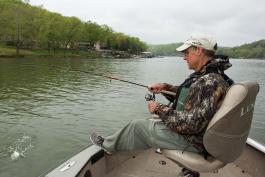
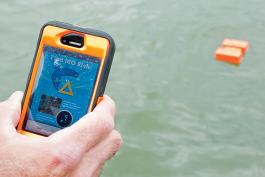


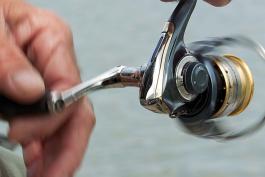
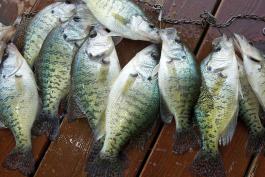

Also In This Issue

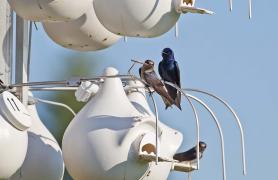
And More...
This Issue's Staff
Managing Editor - Nichole LeClair Terrill
Art Director - Cliff White
Staff Writer/Editor - Brett Dufur
Staff Writer - Jim Low
Photographer - Noppadol Paothong
Photographer - David Stonner
Designer - Stephanie Thurber
Circulation - Laura Scheuler






















